Filter by

Advances in Infectious Diseases and Clinical Microbiology during the COVID-19…
Background and Objectives: Aspirin (ASA) is a commonly used antithrombotic drug that has been demonstrated to reduce venous thromboembolism. The aim was to analyze if geriatric COVID-19 patients undergoing a 100 mg/day Aspirin (ASA) treatment prior to hospitalization differ in hospital outcome compared to patients without previous ASA therapy. Materials and Methods: An observational retrosp…
- Edition
- -
- ISBN/ISSN
- 9783036594682
- Collation
- 250
- Series Title
- -
- Call Number
- -

Advances in Industrial and Environmental Microbiology
Chemical stabilization of soils is one of the most used techniques to improve the properties of weak soils in order to allow their use in geotechnical works. Although several binders can be used for this purpose, Portland cement is still the most used binder (alone or combined with others) to stabilize soils. However, the use of Portland cement is associated with many environmental problems,…
- Edition
- -
- ISBN/ISSN
- 9783036524849
- Collation
- 92
- Series Title
- -
- Call Number
- -
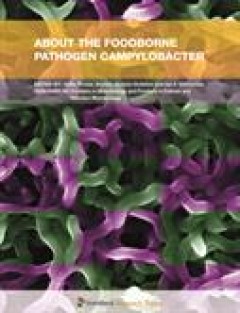
About the Foodborne Pathogen Campylobacter
A significant increase in the prevalence of campylobacteriosis cases has been observed over the past years. Campylobacter has emerged as the leading cause of bacterial foodborne disease worldwide with a significant impact on human health and an associated economic burdens. Campylobacteriosis human cases have been generally correlated with the handling, preparation and consumption of poultry. In…
- Edition
- -
- ISBN/ISSN
- 9782889453887
- Collation
- oer.unej.ac.id
- Series Title
- Frontiers Research Topics,
- Call Number
- Microbiology (non-medical)
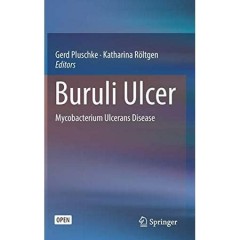
Buruli Ulcer = Mycobacterium Ulcerans Disease
A major objective of this open access book is to summarize the current status of Buruli Ulcer (BU) research for the first time. It will identify gaps in our knowledge, stimulate research and support control of the disease by providing insight into approaches for surveillance, diagnosis, and treatment of Buruli Ulcer. Book chapters will cover the history, epidemiology diagnosis, treatment and di…
- Edition
- 1
- ISBN/ISSN
- 9783030111144
- Collation
- X, 287 hlm; ill., lamp.,
- Series Title
- -
- Call Number
- -

Vaccines for Neglected Pathogens: Strategies, Achievements and Challenges
This book reviews successes and (remaining) challenges in vaccine development for the selected Neglected Tropical Diseases (NTD) of Leprosy, Leishmaniasis, Meliodoisis and Tuberculosis, which are a continuous burden for millions of people in affected areas worldwide. Written by frontline researchers, the volume deep-dives into different vaccine strategies, provides biotechnological background i…
- Edition
- 1
- ISBN/ISSN
- 978-3-031-24355-4
- Collation
- VI, 344
- Series Title
- -
- Call Number
- -
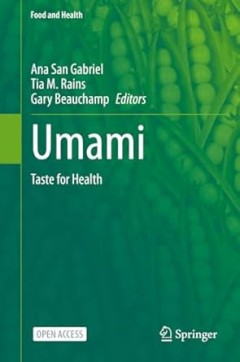
Umami
This Open Access book covers the concept of umami, the unique taste imparted by the amino acid glutamate, was first described in 1908 by Dr. Kikunae Ikeda of Tokyo University. Over the past century, hundreds of studies have explored the mechanistic underpinnings of the taste, leading to the characterization of the umami taste receptor in 2002. How this fifth basic taste figures into nutrition a…
- Edition
- -
- ISBN/ISSN
- 978-3-031-32691-2
- Collation
- XIII, 198
- Series Title
- -
- Call Number
- -
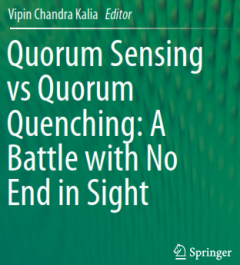
Quorum Sensing vs Quorum Quenching: A Battle with No End in Sight
Hubungan mikroba dengan semua bentuk kehidupan dapat berupa kehidupan bebas, simbiosis, atau patogenik. Manusia memiliki sel mikroba 10 kali lebih banyak daripada sel mereka sendiri. Bakteri ditemukan di permukaan kulit, di usus, dan bagian tubuh lainnya. Bakteri penyebab penyakit adalah yang paling mengkhawatirkan. Sebagian besar penyakit menular disebabkan oleh bakteri patogen yang memiliki k…
- Edition
- -
- ISBN/ISSN
- 978-81-322-1982-8
- Collation
- -
- Series Title
- -
- Call Number
- 579.2 CHA q

Parasites, pathogens, and progress: Diseases and economic development
In this work, the authors combine biological and economic perspectives to suggest an innovative view of American history with implications for how we understand history as a whole.OCLC-licensed vendor bibliographic record.
- Edition
- -
- ISBN/ISSN
- 9780262298391
- Collation
- 1 online resource (viii, 343 pages) :illustrations
- Series Title
- -
- Call Number
- -

Volcanic Lakes
This book aims to give an overview on the present state of volcanic lake research, covering topics such as volcano monitoring, the chemistry, dynamics and degassing of acidic crater lakes, mass-energy-chemical-isotopic balance approaches, limnology and degassing of Nyos-type lakes, the impact on the human and natural environment, the eruption products and impact of crater lake breaching eruptio…
- Edition
- -
- ISBN/ISSN
- 978-3-642-36833-2
- Collation
- -
- Series Title
- -
- Call Number
- -
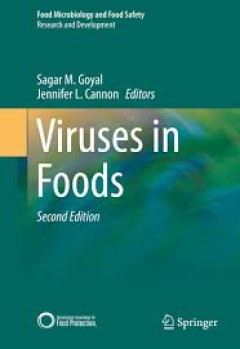
Viruses in Foods
Foodborne viruses are an important group of pathogens recognized to cause significant disease globally, in terms of both number of illnesses and severity of disease. Contamination of foods by enteric viruses, such as human norovirus and hepatitis A and E viruses, is a major concern to public health and food safety. Food Virology is a burgeoning field of emphasis for scientific research. Many de…
- Edition
- -
- ISBN/ISSN
- 978-3-319-30723-7
- Collation
- -
- Series Title
- -
- Call Number
- -
 Computer Science, Information & General Works
Computer Science, Information & General Works  Philosophy & Psychology
Philosophy & Psychology  Religion
Religion  Social Sciences
Social Sciences  Language
Language  Pure Science
Pure Science  Applied Sciences
Applied Sciences  Art & Recreation
Art & Recreation  Literature
Literature  History & Geography
History & Geography